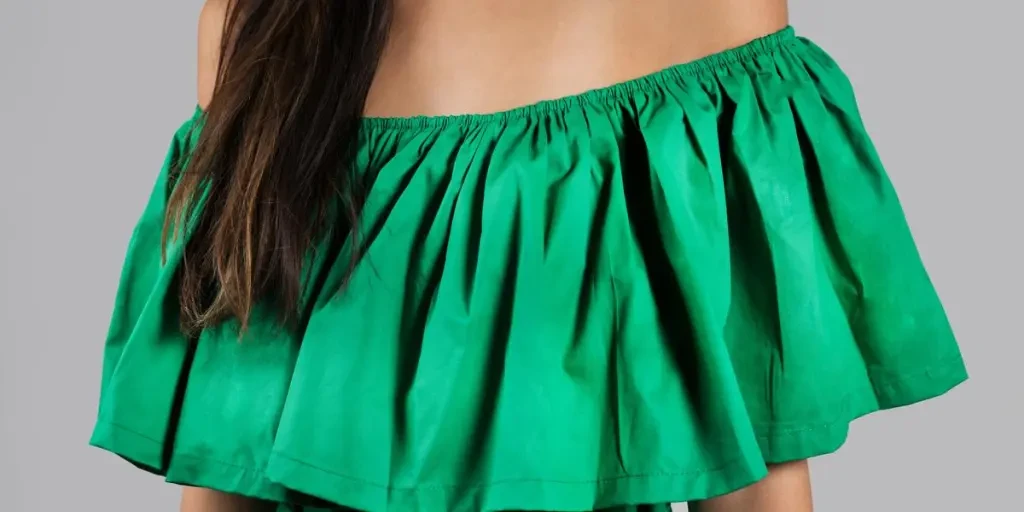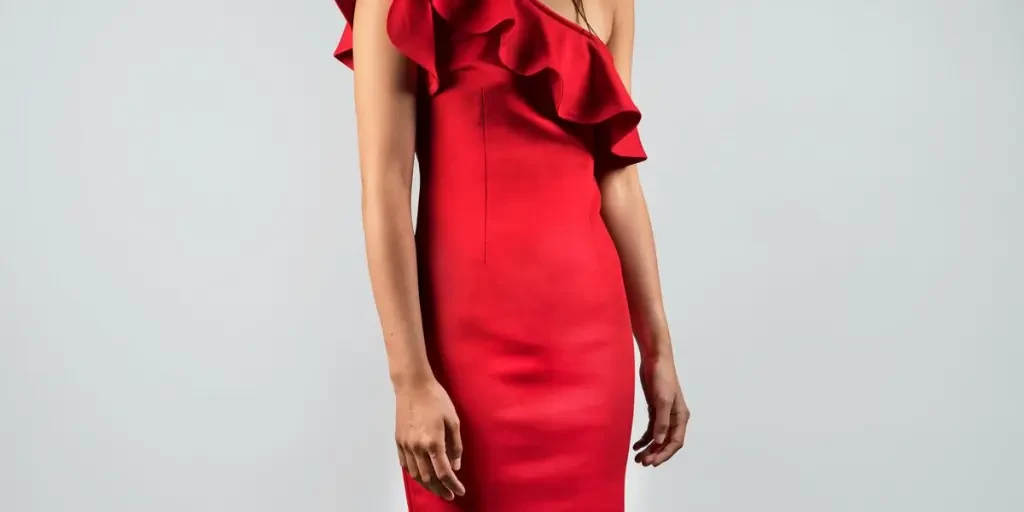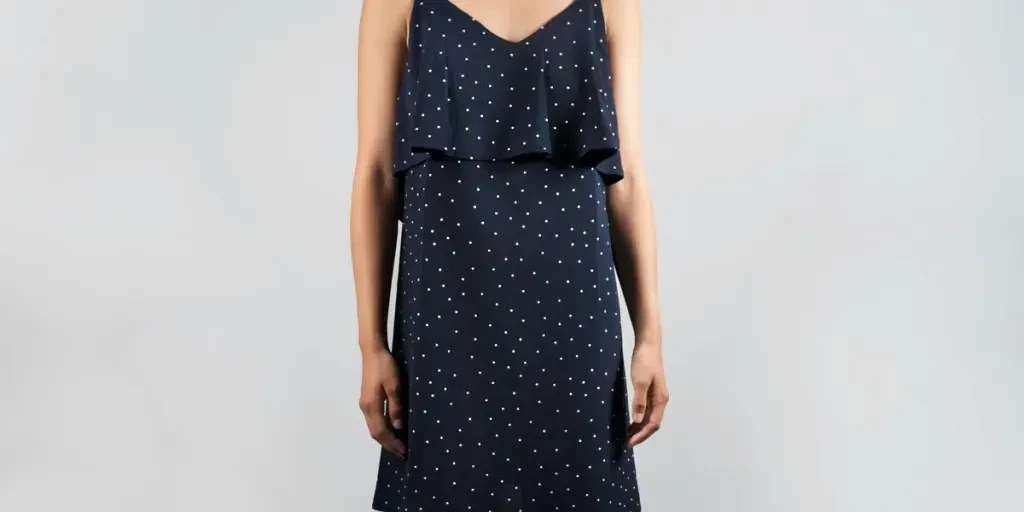Vestidos com babados, com seus babados delicados e charme feminino, fizeram um retorno significativo no mundo da moda. Esse ressurgimento não é apenas uma tendência passageira, mas um reflexo das preferências do consumidor em evolução e da dinâmica do mercado. À medida que nos aprofundamos na visão geral do mercado, exploraremos a ascensão dos vestidos com babados, os principais participantes e regiões que dominam o mercado, e a demografia e as preferências do consumidor que estão moldando essa tendência.
Sumário:
-Visão geral do mercado
-A ascensão dos vestidos com babados no mercado global
- Principais participantes e regiões que dominam o mercado de vestidos com babados
-Demografia e preferências do consumidor
-Design e apelo estético de vestidos com babados
-A evolução dos designs de vestidos com babados
-Padrões e texturas populares em vestidos com babados
-O papel da cor na moda de vestidos com babados
-Materiais e tecidos usados em vestidos com babados
-Tecidos comuns para vestidos com babados
-A Importância do Conforto e da Qualidade na Seleção de Tecidos
-Tendências de tecidos sustentáveis e ecológicos
-Tendências sazonais e influências culturais
-Vestidos com babados para diferentes estações
-Patrimônio cultural e seu impacto nos designs de vestidos com babados
-Semanas de moda globais e sua influência nas tendências de vestidos com babados
-Conclusão
Visão Geral do Mercado

A ascensão dos vestidos com babados no mercado global
Vestidos com babados têm visto um aumento notável em popularidade em todo o mundo. De acordo com um relatório da Research and Markets, o mercado global de vestuário, que inclui vestidos com babados, deve crescer significativamente nos próximos anos. Esse crescimento pode ser atribuído a vários fatores, incluindo a crescente influência das mídias sociais, a ascensão da fast fashion e a crescente demanda por opções de roupas exclusivas e personalizadas.
A tendência de vestidos com babados tem sido particularmente proeminente nos segmentos de noivas e ocasiões especiais. O mercado de vestidos de noiva, por exemplo, cresceu de US$ 40.16 bilhões em 2023 para US$ 43.7 bilhões em 2024, a uma taxa de crescimento anual composta (CAGR) de 8.8%. Espera-se que esse crescimento continue, atingindo US$ 58.19 bilhões até 2028, impulsionado pelo número crescente de casamentos e pela crescente demanda por trajes de noiva exclusivos e elegantes.
Principais participantes e regiões que dominam o mercado de vestidos com babados
O mercado de vestidos com babados é dominado por vários participantes e regiões importantes. Grandes empresas como David's Bridal, Pronovias Fashion Group e Vera Wang estão liderando o caminho no segmento de noivas, oferecendo uma ampla variedade de vestidos com babados que atendem a diferentes gostos e preferências. Essas empresas estão continuamente inovando e introduzindo novas coleções para ficar à frente da concorrência.
Em termos de domínio regional, a Ásia-Pacífico é o maior e mais rápido mercado de crescimento para vestidos com babados. A crescente classe média da região, o aumento da renda disponível e a forte ênfase cultural em casamentos e ocasiões especiais contribuíram para a alta demanda por vestidos com babados. De acordo com um relatório da Statista, o mercado de vestidos e saias na China sozinho gerou uma receita de US$ 20,990 milhões em 2024, tornando-se o maior mercado globalmente.
Demografia e preferências do consumidor
A demografia e as preferências do consumidor por vestidos com babados são diversas e estão evoluindo. Millennials e Gen Z são os principais impulsionadores dessa tendência, com sua preferência por moda única, personalizada e digna do Instagram. Esses consumidores mais jovens também são mais propensos a comprar online, tornando o comércio eletrônico um canal crucial para varejistas de vestidos com babados.
Além disso, há uma demanda crescente por moda sustentável e ecologicamente correta entre os consumidores. Marcas como a David's Bridal responderam a essa tendência lançando coleções ecologicamente corretas, como a REIMAGINE by DB Studio, que apresenta vestidos feitos de tecidos reciclados. Esse foco na sustentabilidade não está apenas atendendo à demanda do consumidor, mas também ajudando as marcas a se diferenciarem em um mercado competitivo.
Design e apelo estético de vestidos com babados

A evolução dos designs de vestidos com babados
Vestidos com babados passaram por transformações significativas ao longo dos anos, evoluindo de suas origens na era vitoriana para as passarelas da moda contemporânea. Inicialmente, vestidos com babados eram caracterizados por seus designs elaborados e ornamentados, frequentemente apresentando camadas de renda, babados e bordados intrincados. Esses vestidos eram um símbolo de feminilidade e elegância, usados principalmente por mulheres de alto status social.
Nos últimos anos, o design de vestidos com babados ressurgiu, com designers modernos reinterpretando esses elementos clássicos para atender aos gostos contemporâneos. De acordo com um relatório profissional, as coleções Primavera/Verão 2025 apresentaram um foco renovado em floreios ornamentados e babados, com designers incorporando babados de renda delicados e detalhes românticos. Essa tendência não se limita aos tecidos tradicionais; babados de jeans surgiram como uma tendência notável, adicionando um toque casual, mas chique, à estética do vestido com babados.
Padrões e texturas populares em vestidos com babados
Padrões e texturas desempenham um papel crucial no apelo de vestidos com babados. As coleções Primavera/Verão 2025 destacaram vários padrões e texturas importantes que devem dominar o mercado de vestidos com babados. Padrões florais, particularmente aqueles inspirados nas tendências #ModernRomantic e #SoFocus, são predominantes. Esses padrões geralmente apresentam materiais transparentes em camadas, criando um efeito suave e nebuloso que aumenta o apelo romântico dos vestidos.
Texturas como crochê, renda e bordado inglês também são proeminentes. Algodão pointelle de inspiração vintage com apliques de colocação de renda guipure de algodão e técnicas de ponto de crochê adicionam uma qualidade de herança a vestidos com babados, alinhando-se com os temas #GrandmothersHouse e #StatementCrochet. Além disso, o uso de misturas de fibras naturais como linho, Tencel e urtiga do Himalaia fornece um drapeado estruturado perfeito para uma abordagem natural em roupas de ocasião.
O papel da cor na moda de vestidos com babados
A cor é um elemento vital no design de vestidos com babados, influenciando sua estética e apelo geral. As coleções Primavera/Verão 2025 apresentaram uma paleta de tons pastéis suaves e tons vibrantes, refletindo as tendências da estação. Cores como Optic White, Pink Sorbet, Ice Blue e Radiant Raspberry foram usadas com destaque, alinhando-se com as atualizações #ModernOccasion e #Partywear.
Essas cores não apenas realçam o apelo visual de vestidos com babados, mas também evocam emoções e estados de espírito específicos. Por exemplo, tons pastéis suaves como Pink Sorbet e Ice Blue transmitem uma sensação de inocência e romance, enquanto tons vibrantes como Radiant Raspberry adicionam um toque de ousadia e excitação. O uso estratégico de cores em designs de vestidos com babados ajuda a criar uma coleção coesa e visualmente atraente que ressoa com os consumidores.
Materiais e tecidos usados em vestidos com babados

Tecidos comuns para vestidos com babados
A escolha do tecido é crucial no design de vestidos com babados, pois afeta tanto o conforto quanto o apelo estético da peça. Tecidos comuns usados em vestidos com babados incluem algodão, linho, seda e renda. Algodão e linho são escolhas populares por sua respirabilidade e conforto, tornando-os ideais para vestidos de verão. Seda e renda, por outro lado, adicionam um toque de luxo e elegância, perfeitos para ocasiões especiais e trajes de noite.
De acordo com um relatório profissional, as coleções Primavera/Verão 2025 também destacaram o uso de misturas de fibras naturais, como linho, Tencel, urtiga do Himalaia e cânhamo. Esses tecidos não apenas fornecem um caimento brilhante e estruturado, mas também se alinham com a tendência crescente em direção à moda sustentável e ecologicamente correta.
A importância do conforto e da qualidade na seleção de tecidos
Conforto e qualidade são primordiais ao selecionar tecidos para vestidos com babados. Os consumidores de hoje estão cada vez mais procurando por roupas que não apenas tenham uma boa aparência, mas também sejam agradáveis de usar. Tecidos de alta qualidade, como algodão, linho e seda, oferecem um ajuste confortável e são suaves para a pele, tornando-os escolhas ideais para vestidos com babados.
Além disso, a durabilidade do tecido também é uma consideração importante. Tecidos de alta qualidade têm mais probabilidade de suportar o desgaste, garantindo que o vestido mantenha sua forma e aparência ao longo do tempo. Isso é particularmente importante para vestidos com babados, que geralmente apresentam detalhes e enfeites intrincados que exigem uma base de tecido resistente.
Tendências de Tecidos Sustentáveis e Ecológicos
A sustentabilidade é uma preocupação crescente na indústria da moda, e a tendência para tecidos ecológicos está ganhando força. As coleções Primavera/Verão 2025 apresentaram uma variedade de opções de tecidos sustentáveis, incluindo algodão orgânico, bambu, juta e cânhamo. Esses tecidos não são apenas ecológicos, mas também oferecem texturas e qualidades únicas que aumentam o apelo dos vestidos com babados.
Os corantes vegetais também estão se tornando cada vez mais populares como uma alternativa responsável aos corantes tradicionais. As marcas estão optando por neutros terrosos e fibras naturais não tingidas, criando uma abordagem mais sustentável e ecologicamente consciente para a moda. Essa tendência em direção à sustentabilidade não é apenas benéfica para o meio ambiente, mas também ressoa com os consumidores que estão se tornando mais conscientes de suas escolhas de moda.
Tendências sazonais e influências culturais

Vestidos com babados para diferentes estações
Vestidos com babados são peças versáteis que podem ser adaptadas para se adequar a diferentes estações. Para a primavera e o verão, tecidos leves como algodão, linho e seda são ideais, oferecendo respirabilidade e conforto em climas mais quentes. Padrões florais e cores pastéis são escolhas populares para essas estações, refletindo o clima fresco e vibrante da primavera e do verão.
Em contraste, para o outono e inverno, tecidos mais pesados como lã, veludo e brocado são mais adequados. Esses tecidos fornecem calor e adicionam um toque de luxo a vestidos com babados, tornando-os perfeitos para ocasiões festivas e trajes de noite. Cores mais escuras e texturas ricas também são mais prevalentes nas coleções de outono e inverno, criando uma estética aconchegante e sofisticada.
Patrimônio cultural e seu impacto nos designs de vestidos com babados
A herança cultural desempenha um papel significativo no design de vestidos com babados, com designers frequentemente se inspirando em vestimentas e técnicas tradicionais. Por exemplo, o uso de renda e crochê em vestidos com babados pode ser rastreado até as tradições da moda europeia, enquanto a incorporação de bordados e padrões intrincados reflete a influência de várias heranças culturais.
As coleções Primavera/Verão 2025 também destacaram o impacto da herança cultural em designs de vestidos com babados. De acordo com um relatório profissional, a tendência #Cottagecore, que se inspira na estética rural e pastoral, continua a ter um apelo duradouro. Essa tendência é evidente no uso de texturas rústicas, bordados de posicionamento e cores pastéis suaves, criando um visual atemporal e nostálgico.
Semanas de moda globais e sua influência nas tendências de vestidos com babados
As semanas de moda globais desempenham um papel crucial na formação de tendências de vestidos com babados, com designers exibindo suas últimas coleções e definindo o tom para as próximas estações. As semanas de moda primavera/verão 2025 em Nova York, Paris e Milão destacaram várias tendências importantes em designs de vestidos com babados.
Em Nova York, os designers focaram em floreios ornamentados e babados e delicados babados de renda, criando uma estética romântica e feminina. O uso de babados de jeans também surgiu como uma tendência notável, adicionando um toque contemporâneo aos designs tradicionais de vestidos com babados. Em Paris, a ênfase estava em detalhes inspirados no vintage e misturas de fibras naturais, refletindo a tendência crescente em direção à sustentabilidade e à moda ecologicamente correta.
Essas semanas de moda não só mostram as últimas tendências, mas também influenciam as preferências do consumidor e as decisões de compra. Ao se manterem atentas às tendências que emergem das semanas de moda globais, as empresas podem garantir que suas coleções de vestidos com babados permaneçam relevantes e atraentes para os consumidores.
Conclusão
Vestidos com babados continuam a cativar o mundo da moda com seu apelo atemporal e versatilidade. As coleções Primavera/Verão 2025 destacaram um foco renovado em designs ornamentados e com babados, com forte ênfase em sustentabilidade e tecidos ecológicos. À medida que os designers se inspiram na herança cultural e nas tendências globais da moda, os vestidos com babados devem permanecer um item básico nos guarda-roupas femininos.





 বাংলা
বাংলা Nederlands
Nederlands English
English Français
Français Deutsch
Deutsch हिन्दी
हिन्दी Bahasa Indonesia
Bahasa Indonesia Italiano
Italiano 日本語
日本語 한국어
한국어 Bahasa Melayu
Bahasa Melayu മലയാളം
മലയാളം پښتو
پښتو فارسی
فارسی Polski
Polski Português
Português Русский
Русский Español
Español Kiswahili
Kiswahili ไทย
ไทย Türkçe
Türkçe اردو
اردو Tiếng Việt
Tiếng Việt isiXhosa
isiXhosa Zulu
Zulu